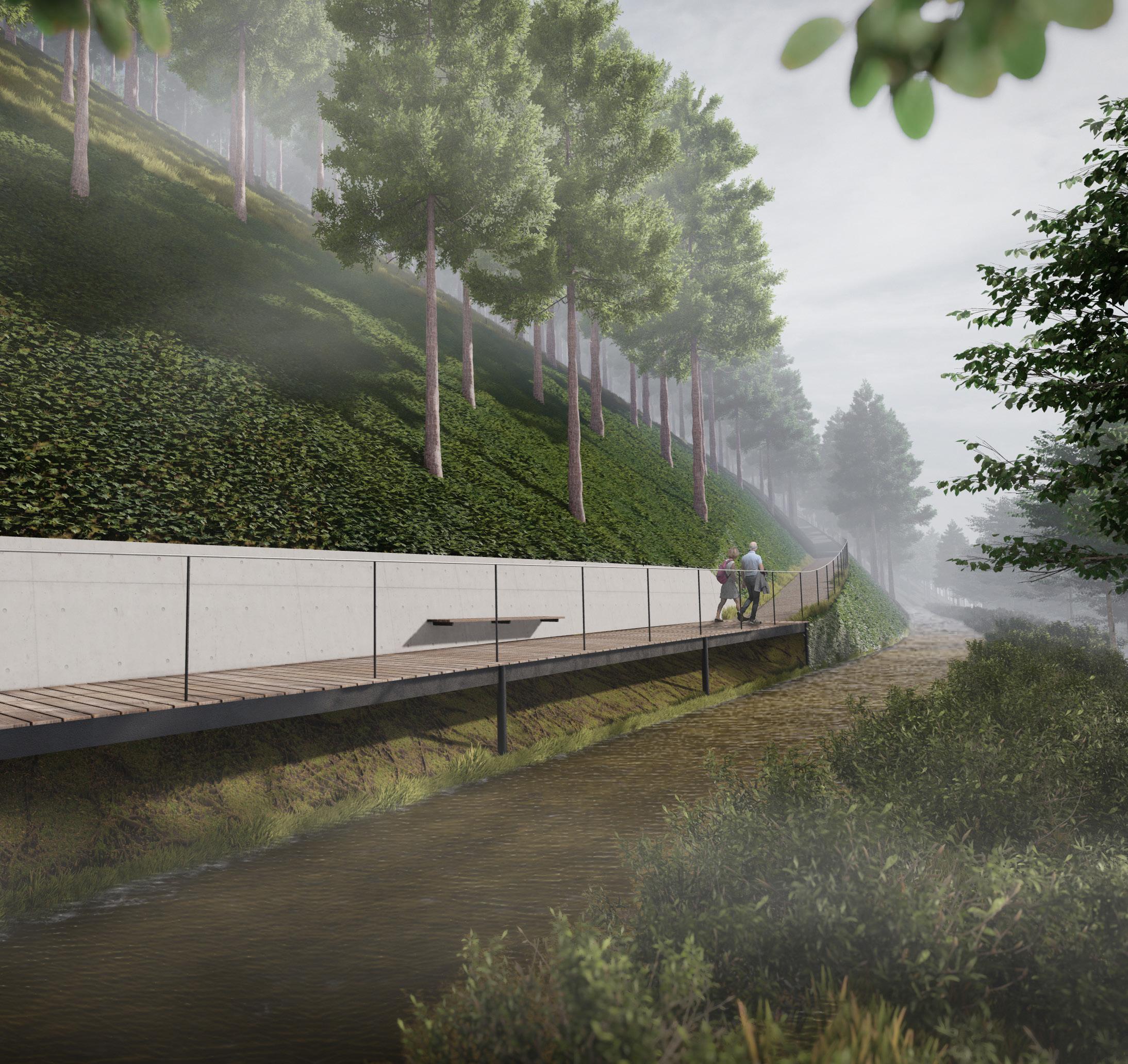
3 minute read
CWMCARN FOREST RENEWAL
2nd Year Landscape Design Project
Project Year 2021-2022
Advertisement
Advisor:
Tim Waterman & Emma Colthrust
Cwmcarn forest area in Wales, known as a recreational destination for families and hikers as well as a source for the timber industry in the UK, had suffered the Larch disease caused by microorganism called Phytophthora ramorum which damaged and killed more than 150,000 larch trees in 2013. This is one of many unique examples of the loss of forests that does not relate to global warming and human activities.
As a result of the unpredictable infection, all the larch trees must be felled to stop the spreading of the disease, according to the Welsh nationwide strategy, and the area has to be reforested. It is also a great opportunity to introduce new species which are less susceptible to the disease to increase the biodiversity of the area. This studio design project will focus on the root cause of the massive forest renewal project.
The interventions consist of the prevention of the forest-wide spread of the pathogen by introducing water canals to evacuate the infected run-off water out of the site. Moreover, the planting areas are divided into sectors to support selective logging and further control the disease. Lastly, the pathways are redesigned to enhance the visiting experience as well as the introduction of scientists and logging routes to reduce cross circulation between three disciplines of the site.
Existing Condition
The forest has been wooded for UK’s timber industry since the 1800s. In 2013, The larch disease is identified on the site via periodical aerial imagery. The felling project has begun in 2015.
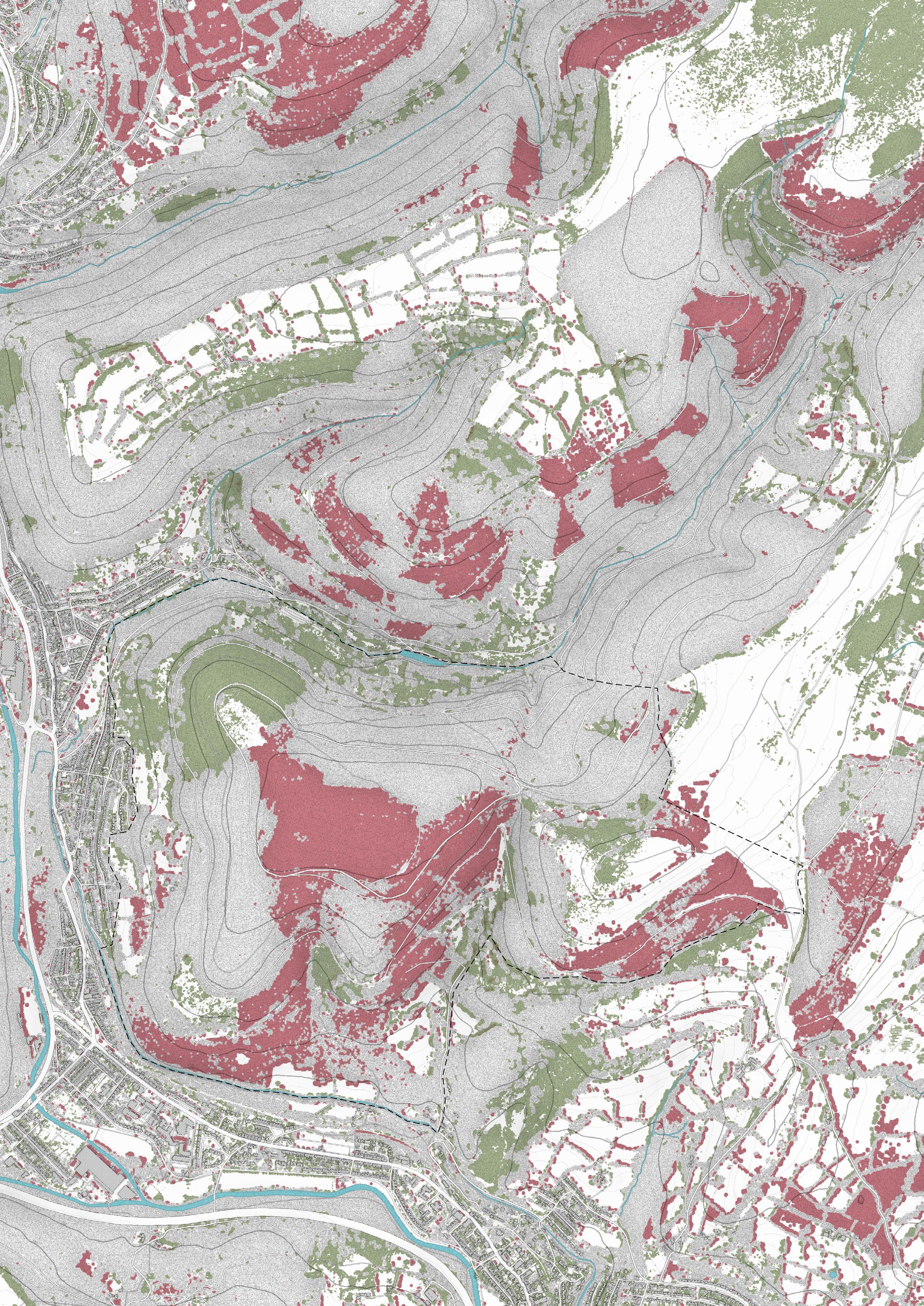
The loss of forest area is the result of the forestry industry and the felling project caused by the disease. The gain in forest area comes from the planned forestation for the UK’s timber industry and the forest renewal project began in 2017.
Understanding The Larch Disease
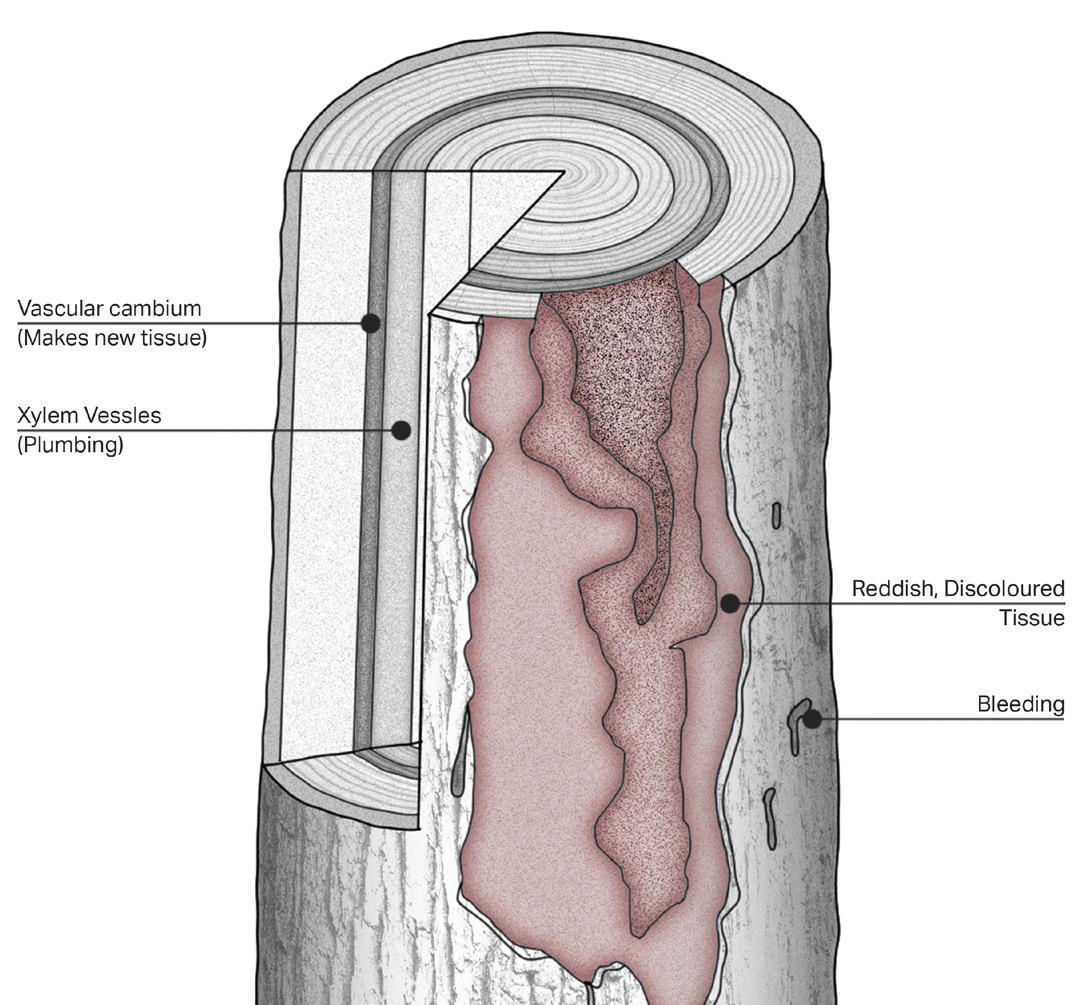
It’s deadly to Larch trees once infected. Water droplets are the key factor in the transmission since it carries the spores of P. ramorum from a tree to others. This makes the rainy season the most effective season for the spread of the disease. The transmission also involves wind direction, air temperature, humidity, precipitation, terrain slopes, surface runoff, groundcovers, and human and animal activities.
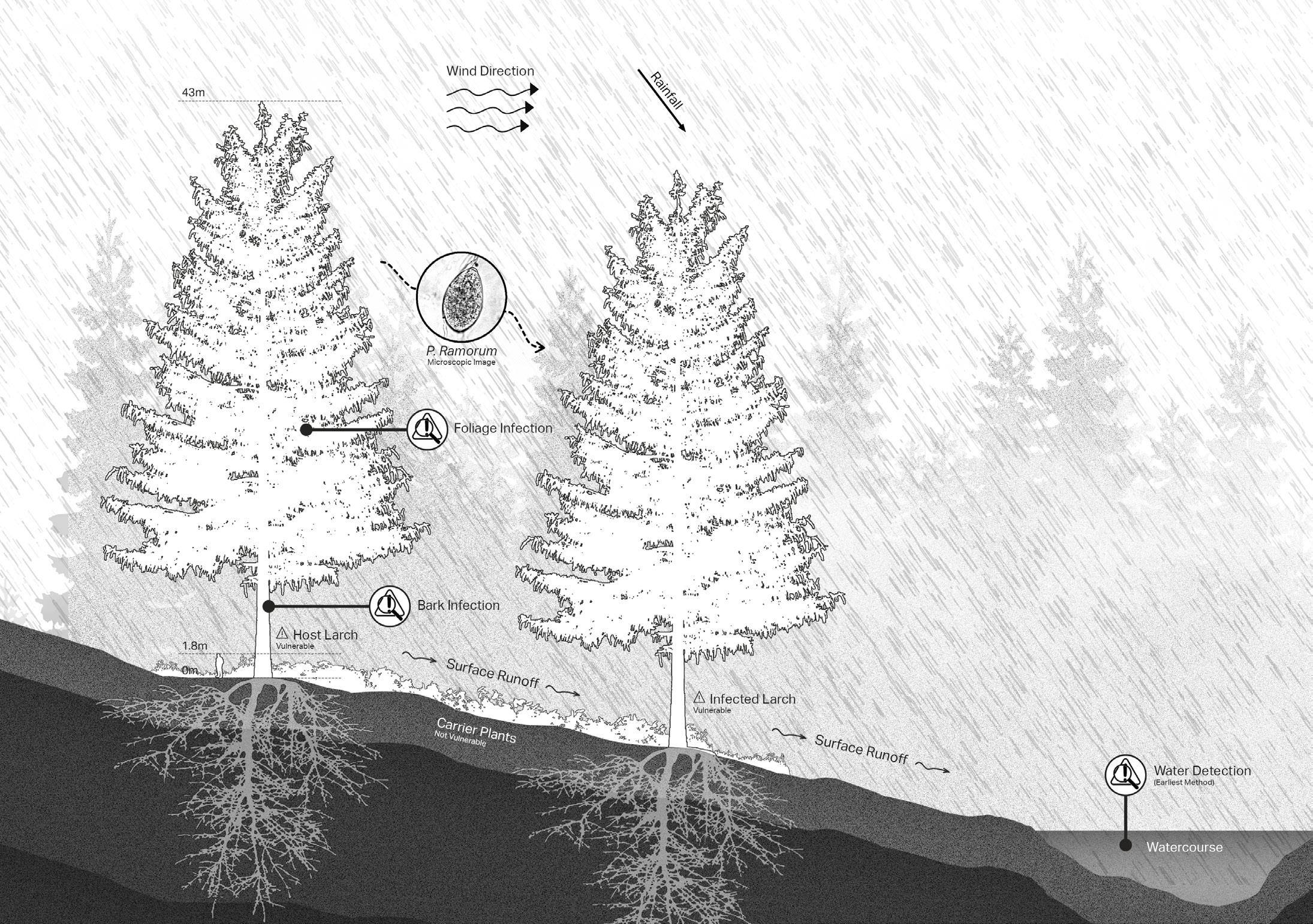
Detection Method

The pear submerged in the adjacent watercourse is the indication of the presence of Phytophthora oomycota in the collected run-off water from the higher area. If the pear shows signs of infection, the pear will be carried to the lab to identify the presence of P. ramorum
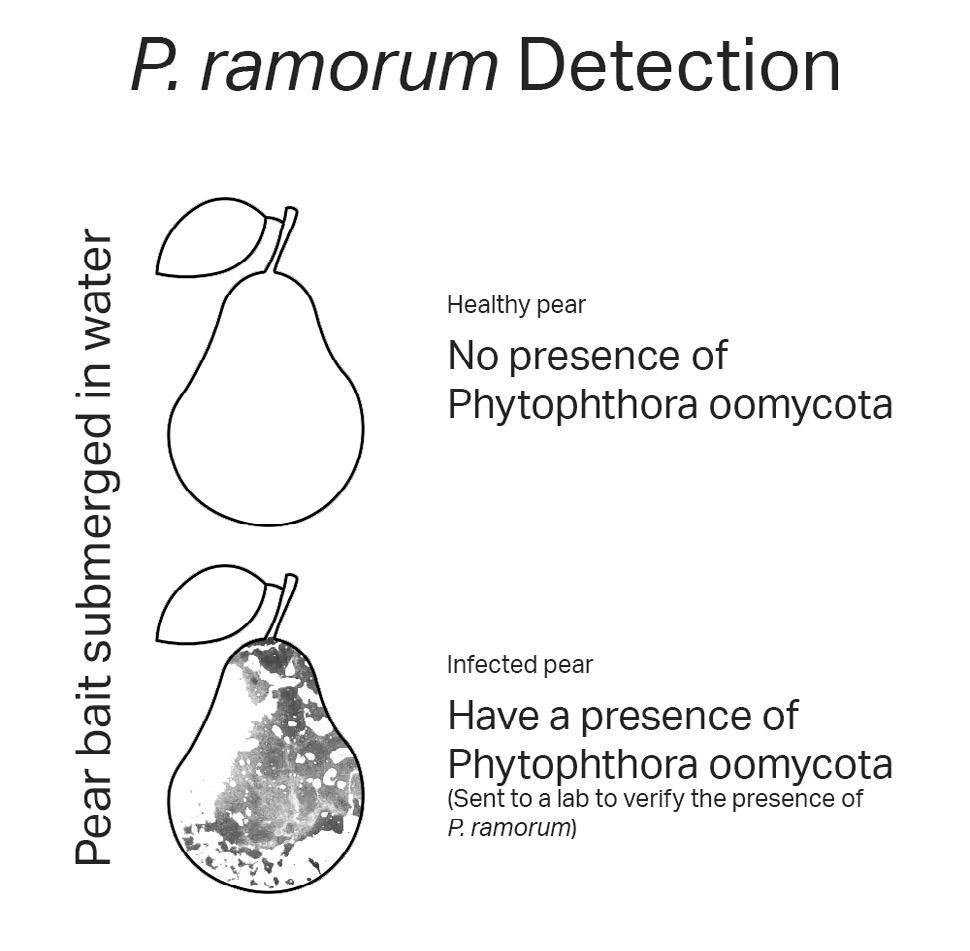
Proposed Exploded Diagram
The proposed layout of Cwmcarn Forest consists of three circulation layers and two canal types.
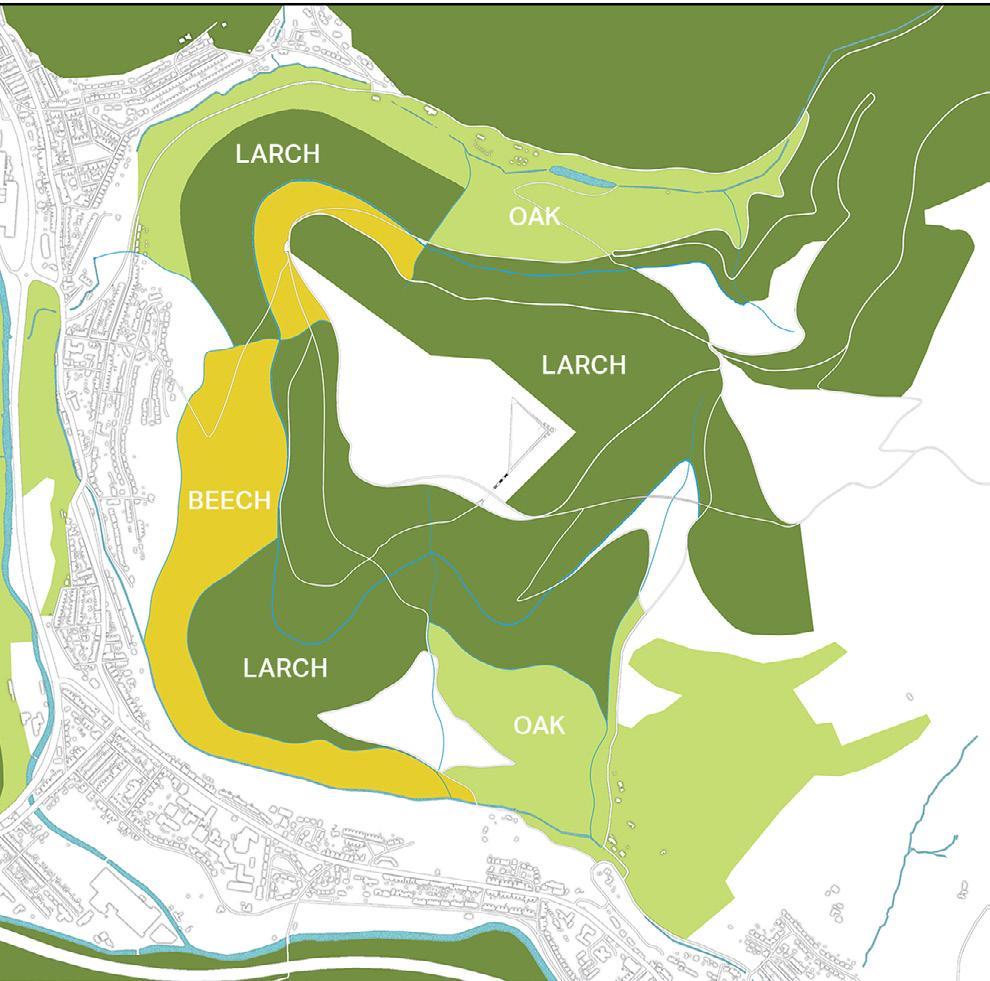
The top layer of the exploded diagram shows the suggested and casual route for the visitor to experience the forest.
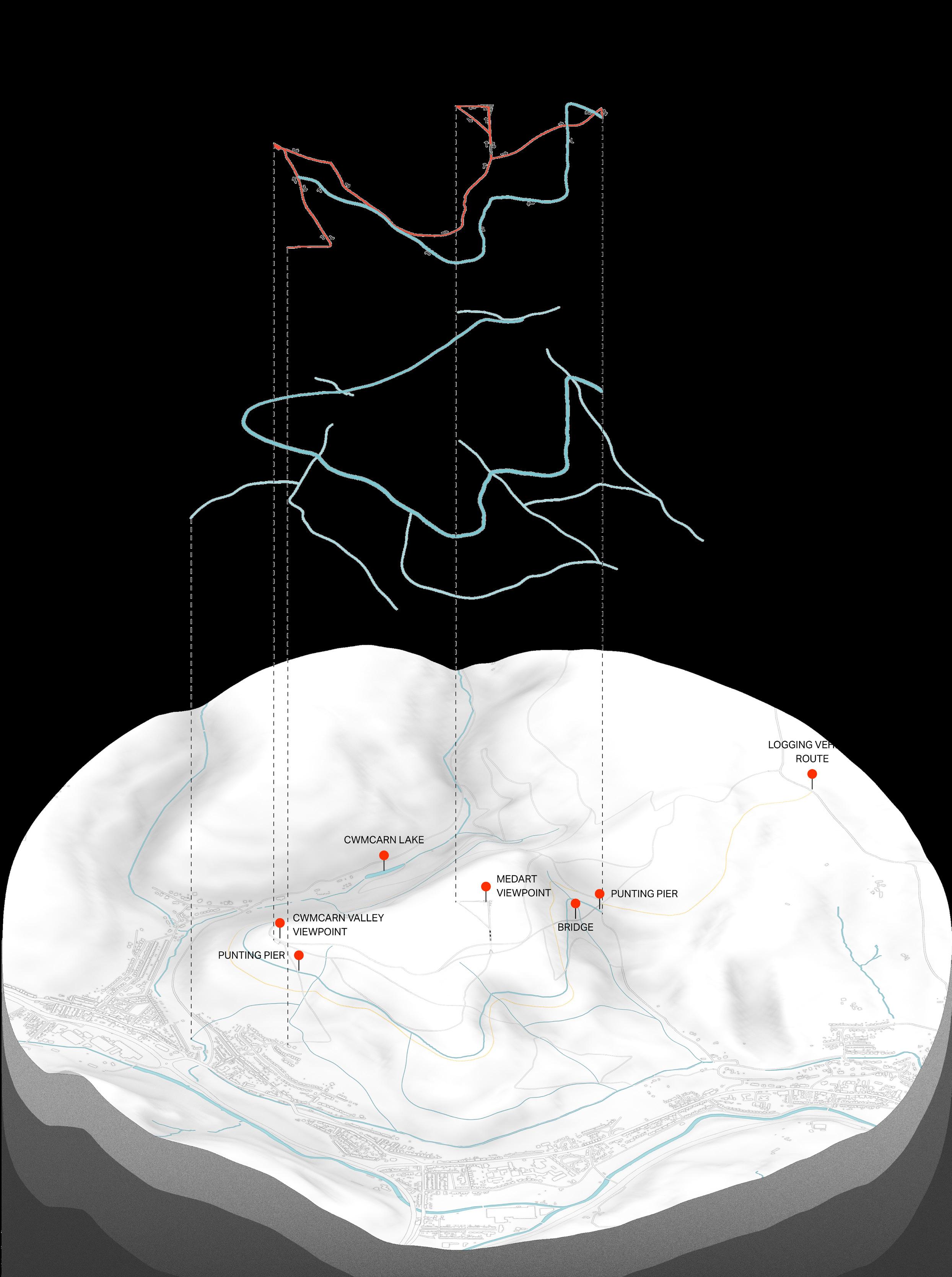
The middle layer shows the canal system introduced to counter the surface run-off infection between tree planting plots.
The base terrain shows the location of point-of-interest of the site as well as the “Logging route” highlighted in yellow.
Approach Of Intervention

The intervention can be done by lowering the larch density and introducing non-host trees. The other approach is to divide the planting area into sectors with a space between each plot. The water canal is introduced to collect the infected runoff water to control the possible spreading. The two approaches are combined to increase controlling efficiency.
The planting design aims to reduce the coverage of Larch trees and introduce broadleaves such as English Oak and European Beech to the site. These tree species can be used as a source of hardwood for the UK’s timber industry and they are immune to the Larch Disease.
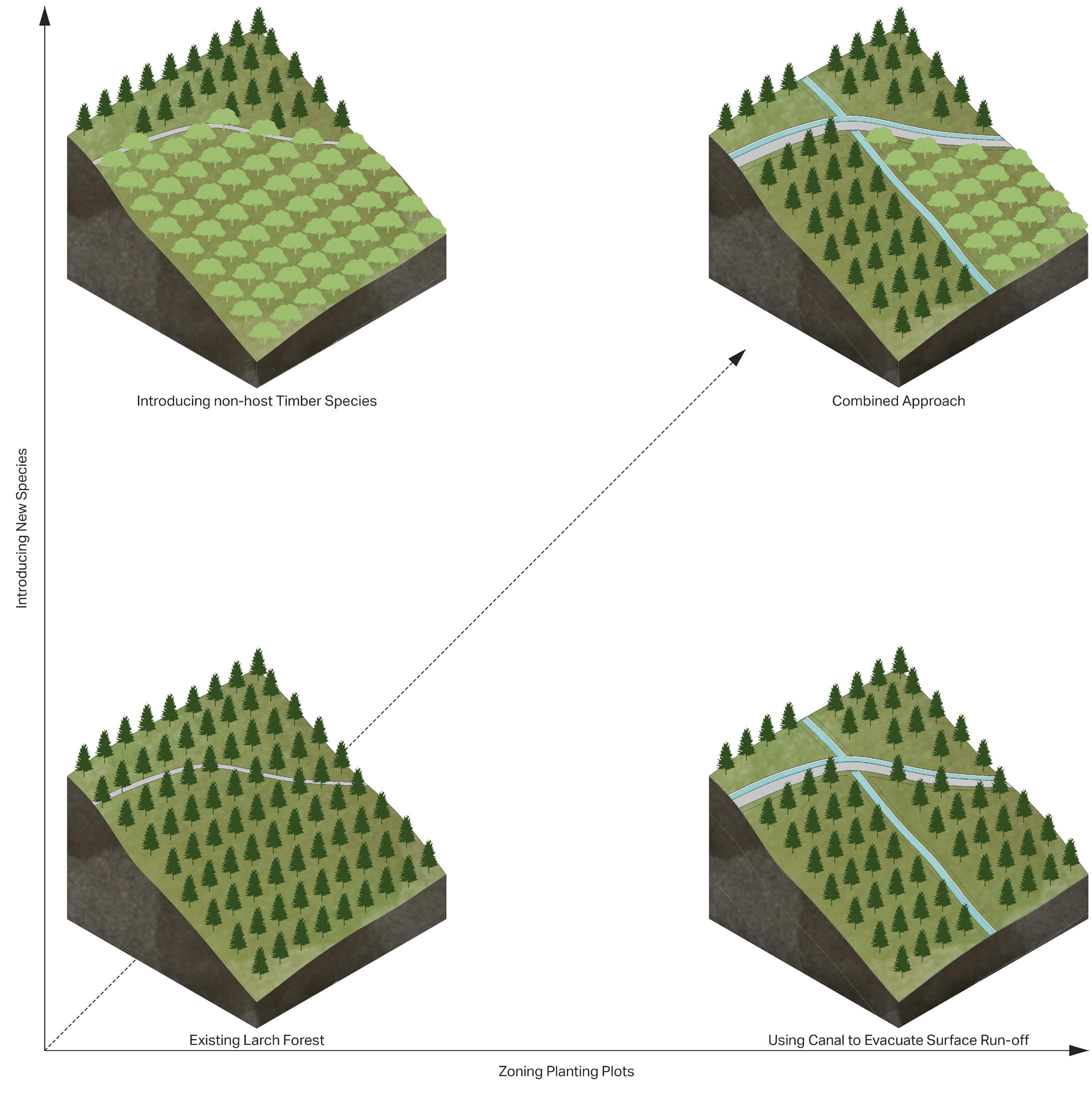
Proposed Site Plan
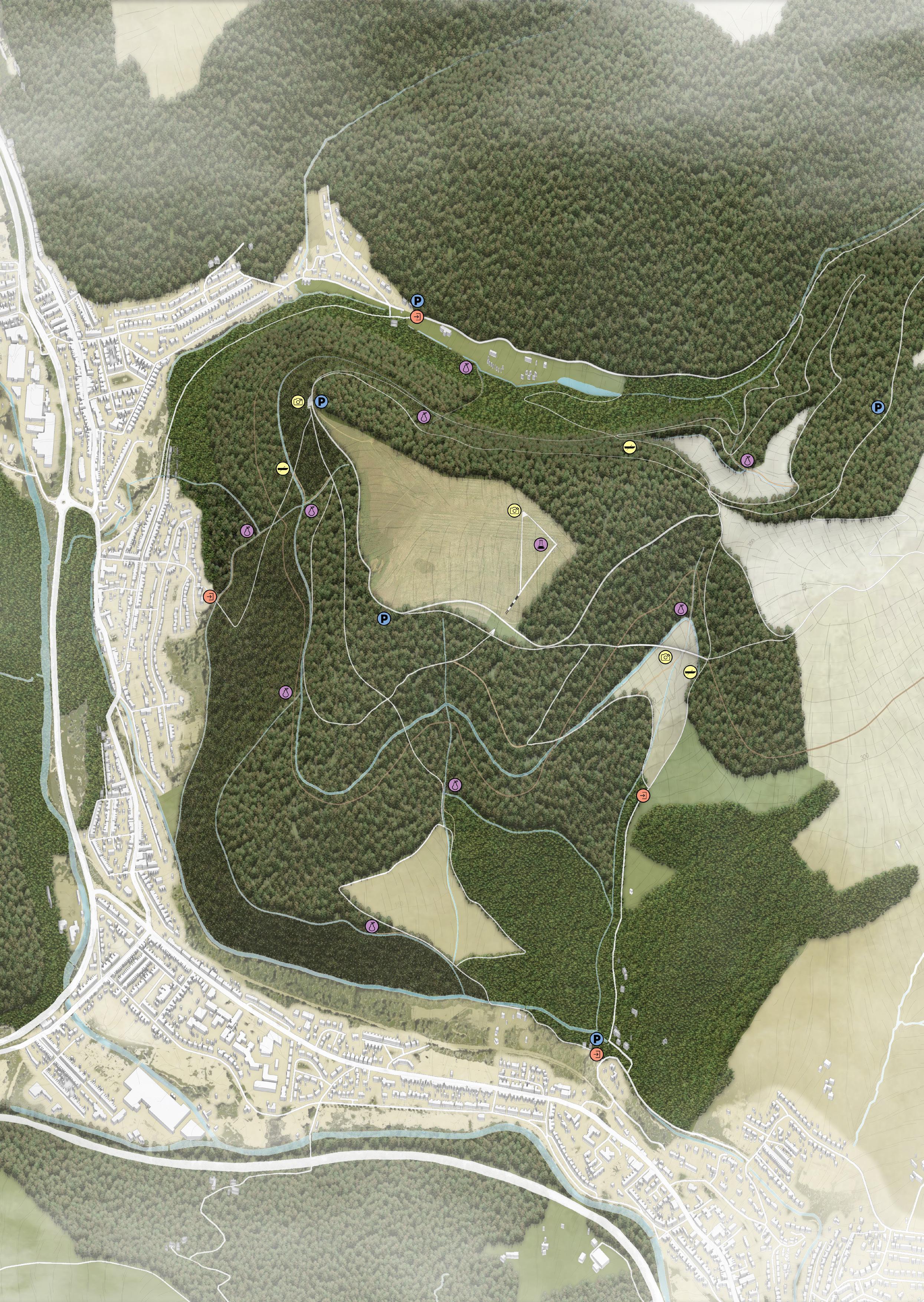
The site plan includes the development of pathways to be more stable to serve more users. Some difficult paths are created for a more challenging experience. The hidden routes for scientific research and logging are also created to reduce crosscirculation between different routines.
3 proposed entrances provide access to the visitors from the local bus stops. The new pathogen learning centre and laboratory is located on the summit as a destination for visitors. The proposed bridge gives users a new stunning experience and adds more dynamics to the forest area.
Elevated Railings
The railings are made of brushed stainless steel for durability. These railings reflect the sky which creates an illusion of glowing lines to lead visitors in the desired direction. The black poles supporting the rail create an illusion of levitating handrails.
The Language Of Wayshowing
To guide the visitors to the destinations in Cwmcarn Forest, the visual languages are designed. The signs are made of plates of Corten steel cut out the texts and symbols with a CNC machine.
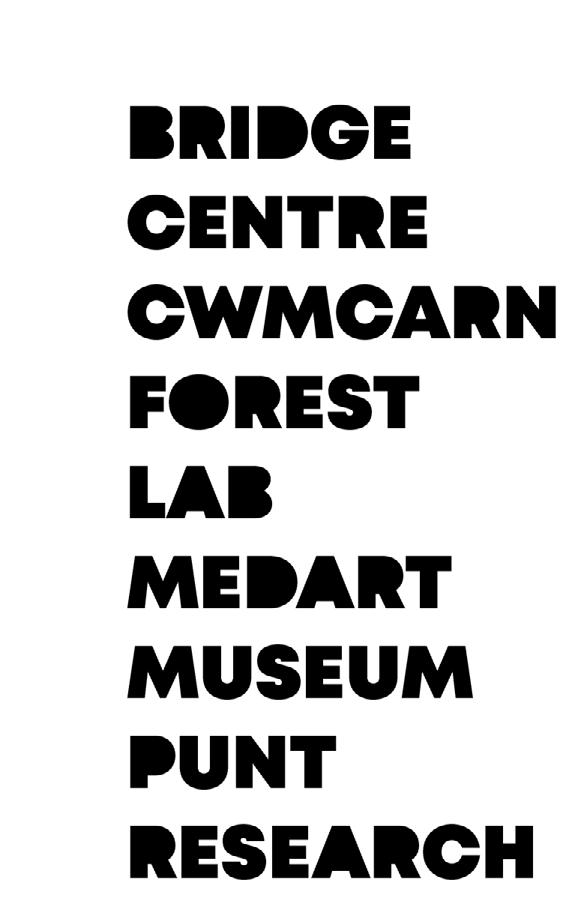
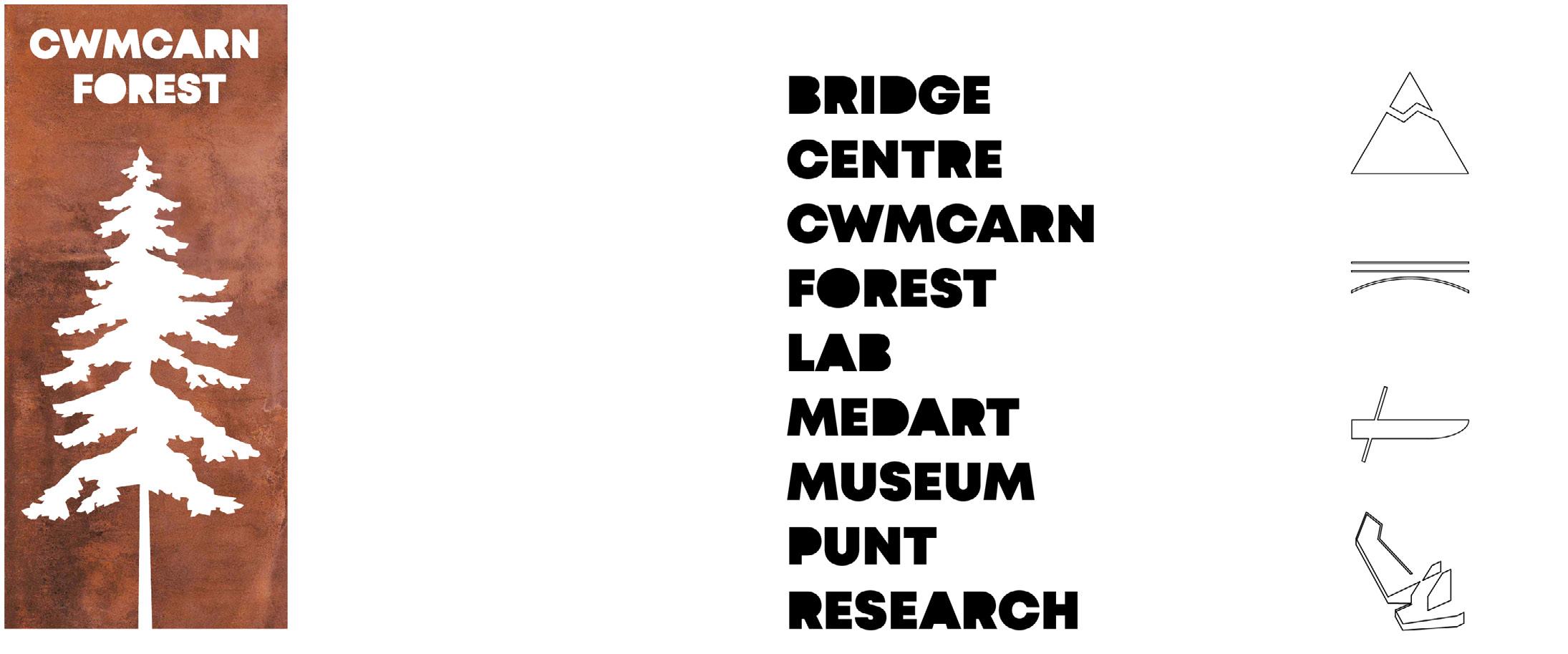
Concrete is used to highlight man-made interventions which contrast the surrounding forest environment, this helps visitors spot them easily. The railings are made of brushed stainless steel placed on the black poles to create the levitating effect and draw the line of sight to a certain destination.
Concrete Slab
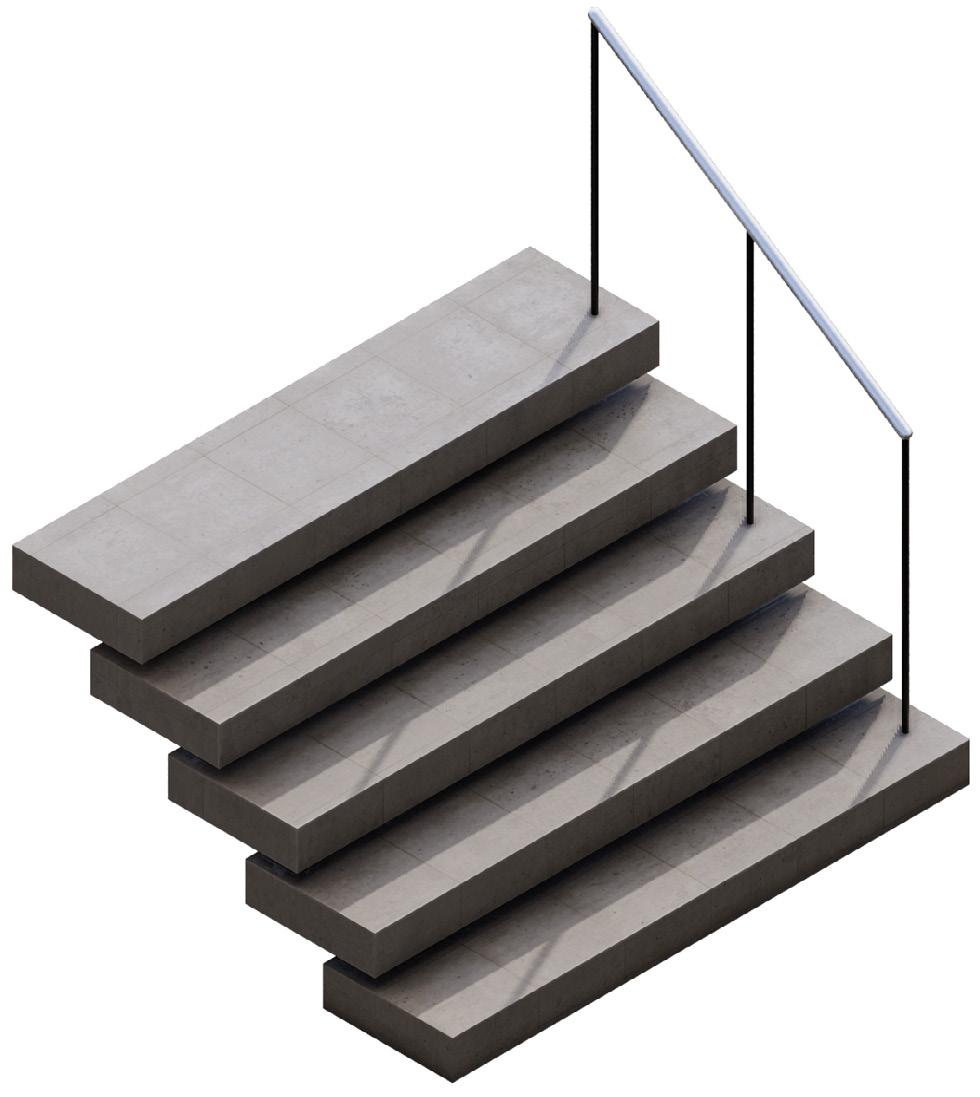
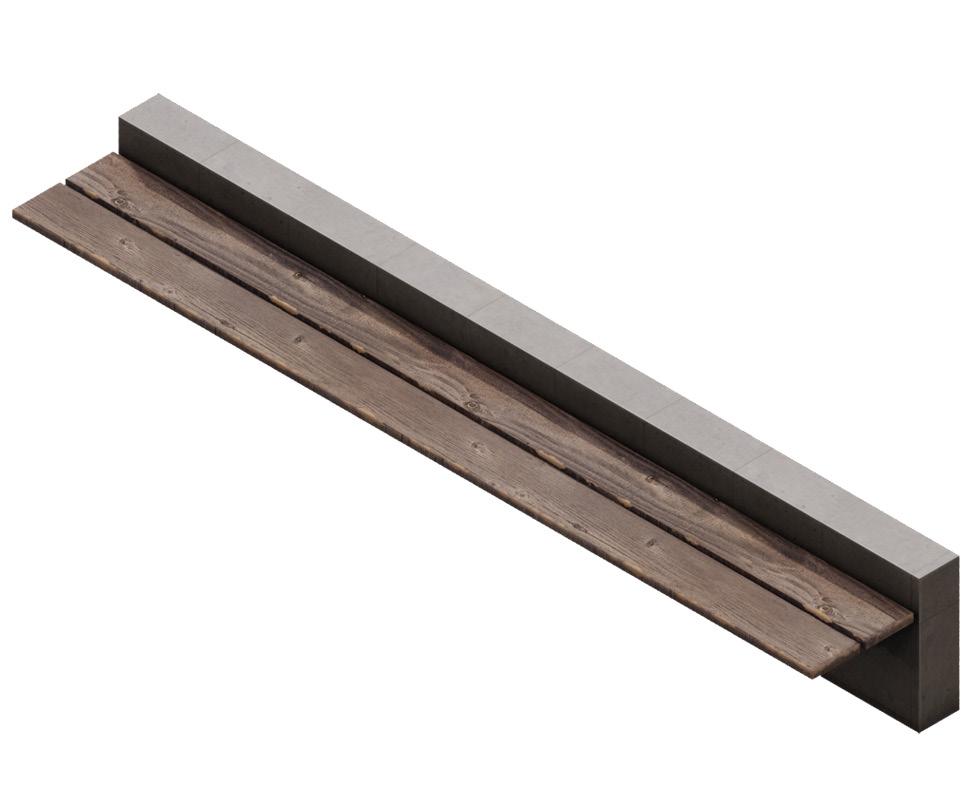
The stairs are located on the steeper areas of the pathways. They are made of concrete slabs, partly buried into the terrain to emphasise the contrast of man-made elements in the forest.
Signs
The sign is the most universal and basic way of providing direction to the visitors. The signs in Cwmcarn Forest are made of a plate of Corten steel. The texts and symbols of the destination are made of the negative space on these steel plates.
Bench
The benches use wooden planks for more comfort when sitting. The cantilever design from the concrete half wall is in line with other interventions. They are placed over the forest to allow visitors to rest during their walk.
Font Symbols










